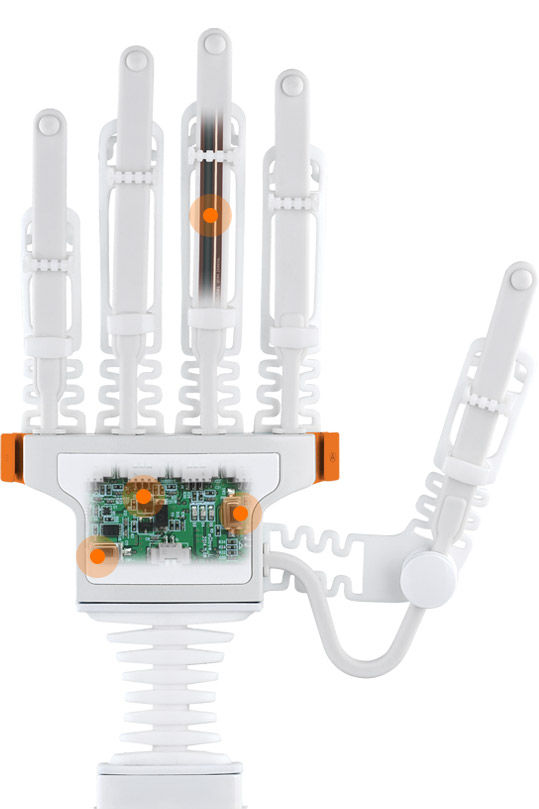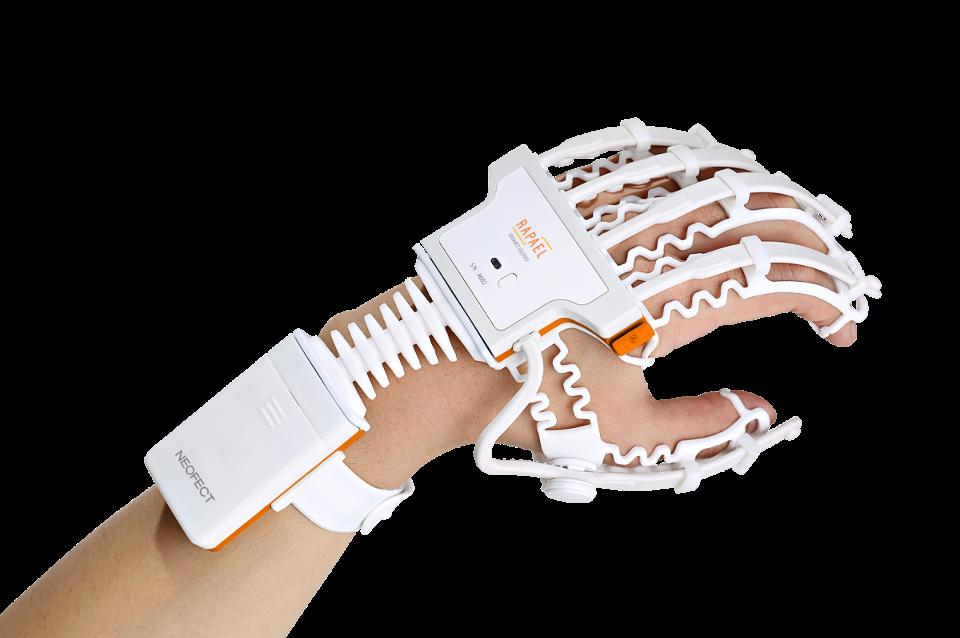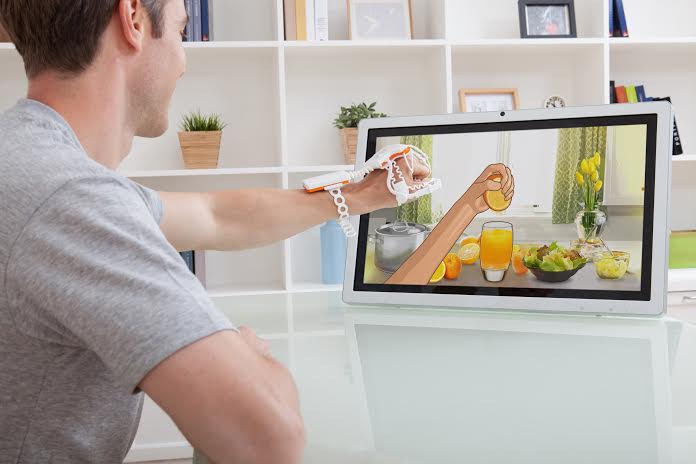Helping Hand: Neofect Smart Glove is a High-Tech Rehab Device

It’s hard to grasp just how difficult it can be to navigate daily tasks without the full use of your hands until you experience it yourself (no pun intended). Simple things you once took for granted—like scratching an itch, putting on your clothes, picking up a coffee mug, or chopping vegetables—suddenly feel like Herculean tasks. The road to rehabilitation after an injury or stroke can be a long and frustrating one, requiring hours of physical therapy. But new advancements in medical technology could make it a lot easier (and more fun) for patients to recover.
Presented at the CES 2017, the RAPAEL Smart Glove is a high-tech rehab device that fits over a patient’s hand and wrist like an exoskeleton. It’s made of elastomer, a soft and deformable synthetic polymer material, and weighs just 4.6 ounces to avoid putting strain on the wrist. The ergonomic design allows for a wide range of joint movements that can help with regaining motion, like twisting the forearm or wrist, and flexing and extending the wrist and fingers.


Physical therapists and other medical professionals can put the RAPAEL Smart Glove to work by guiding their patients through a series of exercises and gathering data on exactly what their muscles, bones, and tendons are doing throughout the process. The glove features a bending nine-axis movement and position sensor that tracks acceleration, angular rates, and magnetic fields to measure wrist movements. These sensors connect to a computer system that uses the data to compute the amount of individual finger movements, too.
But the best part is that the glove actually turns rehabilitation into a game. An Android app that connects the glove to a smartphone via Bluetooth guides the patient through games and activities, bringing some fun into a process that can sometimes be painful and frustrating. The animated lessons include a menu of real world hand functions, like throwing darts or squeezing oranges, with the glove’s sensors tracking how the patients are doing and what needs to be improved.

With that information, the app learns which exercises the patients should work on the most, creating a customized range of recommended activities in the same way Netflix learns which movies and shows you might want to watch. Patients can rent the FDA-approved device for $99 per month to use at home.
The glove only works for patients who haven’t lost full muscle mobility, and different kinds of mobility problems can require different lengths of time using the device. But this cool tech could be a significant help to some of the 795,000 people in the United States who have a stroke each year, preventing some long-term disabilities.
The company behind the RAPAEL Smart Glove, South Korea-based Neofect, plans to develop a smaller version that can be used for pediatric patients, and the concept of making rehabilitation into a game could eventually spread to the treatment of other kinds of injuries and loss of movement, too. It’s an exciting look at what could be in store for medical technology in the coming decades.




